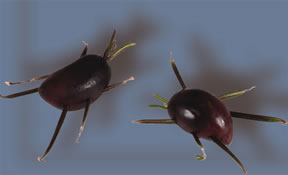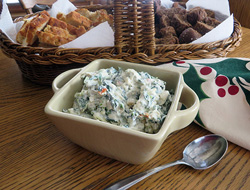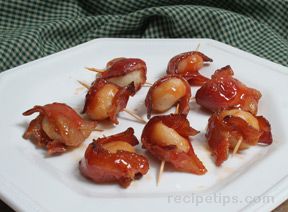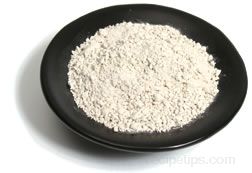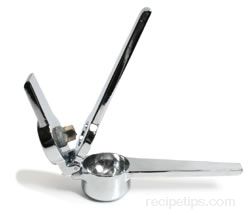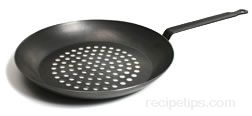Similar Content to: Chestnut
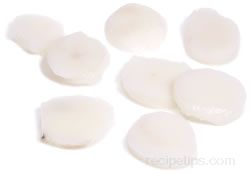
Often easily confused with the Chinese water chestnut is the water caltrop grown in Asia and Europe, that is not from the same plant family and therefore, is not the same tuber. The caltrop, which is also known as the European water chestnut, is a member of the Trapa nantans genus, which is part of the Trapaceae family of water chestnuts. This plant, which floats in the water, sprouts broad leaves rather than narrow spiked grass-like leaves. Illegal in some U.S. states, the caltrop should not be eaten raw due the the toxins contained in the meat of this plant, which can only be neutralized by cooking the plant corm. The water caltrop produces a fruit, similar to a nut, that is cooked to become the edible portion served in European, Asian and African food dishes. The fruit of the caltrop is also known as the Singhara nut, Jesuit's nut or Ling nut.
The more common Chinese water chestnuts have been prepared for centuries and continue to be a very popular ingredient in Asian cooking for use in salads, entrees and appetizers. The dark skin of the common edible tuber provides the appearance of a tree chestnut or a small flower bulb. The flesh is white in color, very crisp and moist, and when served fresh it provides a flavor similar to a common chestnut grown on trees. When cooked, water chestnuts have a flavor similar to corn. They are very perishable after harvesting and must be kept refrigerated before using. When preparing whole water chestnuts with skin, wash the chestnuts thoroughly to remove dirt and debris. Either peel the skin away prior to cooking or peel after cooking. Peeling before they are cooked can be easily accomplished with a sharp knife, but may result in a loss of some of the meat. Peeling after cooking can be accomplished easily if the chestnut skin is scored with a slit or an "X" after cooking and then placed in boiling water for 3 to 5 minutes. The brown skin removes easily, but the meat will begin to discolor, turning into a tannish color. To keep the color from turning, place the chestnuts in acidulated water bath, covering the meat until ready to be prepared or add a small amount of lemon juice to the water when cooking. Boiling or steaming fresh whole water chestnuts for 5 to 7 minutes will cook the chestnuts adequately so they can be added to other foods.
Fresh chestnuts should be stored unpeeled and kept refrigerated for no longer than several weeks. To retain the crisp texture, place the chestnuts to be refrigerated in water so they are covered with moisture during their storage. Peeled water chestnuts can be kept for up to 3 days immersed in water, which should be changed daily to preserve their flavor and texture. Water chestnuts can also be stored in a brown bag without using water, but they may dry out faster by not using water. Uncooked or cooked chestnuts can be kept peeled or unpeeled in a freezer for up to 6 months.




